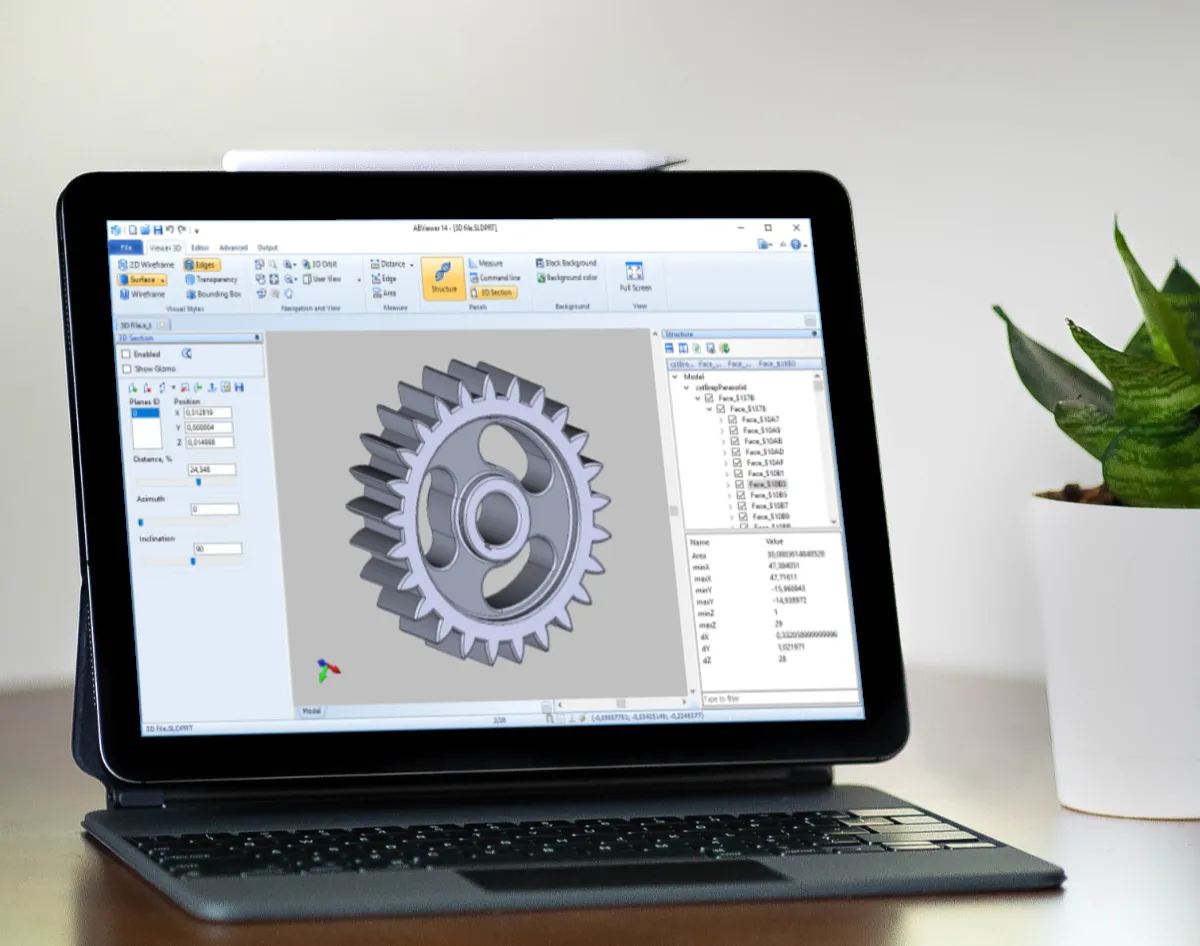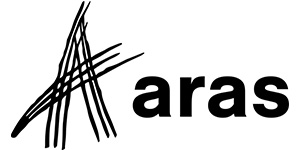
Save your development resources for what really counts and leave 3D CAD data access to us. HOOPS Exchange is the industry-leading SDK that enables your application to read 30+ CAD formats and write to 10+ export formats, all through a single, easy-to-integrate API.
The HOOPS Exchange SDK is a set of C++ software libraries that enables development teams to quickly add reliable 2D and 3D CAD import and export to their applications, accessing a broad range of data including boundary representation (B-REP), product manufacturing information (PMI), model tree, views, persistent IDs, styles, construction geometry, visualization and more, all without depending on any CAD system.
HOOPS Exchange supports access to a variety of mechanical CAD formats, including CATIA, NX, Creo®, SOLIDWORKS, Inventor, and Solid Edge® as well as CAD standards like JT, STEP, STL, IGES, and AEC formats like Revit, IFC, and DWG. Export to popular formats such as JT, STEP, STL, FBX and more.

Features & Benefits
HOOPS Exchange empowers your teams to rapidly develop 3D applications with robust, high-fidelity data import and export capabilities, all without data modification.
Simplify CAD and AEC data import into your application and increase 3D interoperability with access to over 30 popular 2D and 3D file formats. The HOOPS Exchange API converts your data into the highly compressible, open PRC file format, providing robust data access while maintaining the integrity of your data.
No matter the engineering industry or workflow, HOOPS Exchange provides the reliable data translation you need. From mechanical design, engineering, and manufacturing, to building and construction, shipbuilding, plant, and process industries, HOOPS Exchange supports your workflows with full 3D model tree access, exact PMI, and advanced selection capabilities.
Access essential CAD data, including product manufacturing information (PMI), with graphical representations in both visual and semantic forms. HOOPS Exchange ensures accurate tessellation, identical to the original CAD system, and associates PMI markups with assemblies, sub-assemblies, and parts.
Easily integrate CAD data access in your application with the ability to read and write popular 2D and 3D formats. Maintain full control over what data is read with a single API call.
Keep all your data intact without loss of precision or accuracy with HOOPS Exchange’s proprietary PRC format. You’ll be able to keep entities in the original parametric form defined by the original modeling system.
Files can be compressed up to 100x smaller than the original CAD files using HOOPS Exchange and the PRC file format.
Simplify sharing engineering data downstream through interactive 3D PDF documents for smart reports, work instructions, and embedded videos with HOOPS Exchange.
HOOPS SDKs are designed to work together as a complete solution. HOOPS Exchange also integrates tightly with Polygonica, enhancing mesh processing within your application.

Developer Resources
Thanks to the partnership between Tech Soft 3D and Siemens, Parasolid users benefit from the fastest and most accurate CAD translation available. Together, we’ve optimized the integration between HOOPS Exchange and Parasolid for reliable CAD data access.

Want to test the power of HOOPS Exchange yourself? Explore all the engineering-specific features available with our HOOPS Desktop Demo Viewer.


Developers Love Our Tools and Partners Love the Results
Accelerate the development of your engineering application with the HOOPS Exchange SDK for CAD data import.
Frequently Asked Questions (FAQ)
HOOPS Exchange supports a variety of CAD and AEC formats, including:
Read & Write Support:
3MF, 3MF, ACIS, ACIS, FBX, gITF, IGES, JT, OBJ, Parasolid, PDF, PRC, PRC, STEP, STEP XML, STL, U3D, VRML, VRML
Read Only Support
3DS, CATIA V4, CATIA v5, CATIA V6, COLLADA, Creo, DGN, DWF, DWG, I-DEAS, IFC, Inventor, Navisworks NWD, NX, Pro/E, Revit, Rhino, Solid Edge, SOLIDWORKS, VDA-FS
Write Only Support
USD
PRC is the ISO-standard format used behind 3D PDF files. It’s the native model format for HOOPS Exchange, allowing you to embed lightweight 3D data directly inside 3D PDFs. PRC files can be highly compressed without losing geometry accuracy, making them ideal for sharing engineering data.
Yes, HOOPS Publish is now integrated into HOOPS Exchange as part of a recent product consolidation. These products have always gone hand-in-hand, as they are shipped together and share core libraries. The consolidation streamlines the packaging and naming without impacting any of the core features from HOOPS Publish.
HOOPS Exchange supports Windows, Linux, macOS, and Mac Catalyst. Limited functionality is also available on Apple iOS and Android. APIs are available for C, C++, and C#.
Yes, one of the most compelling parts of HOOPS Exchange is its interoperability. There are various ways you can connect it to both third-party libraries and other HOOPS SDKs.
Modeling Kernels:
ACIS
Open Cascade
Mesh Repair APIs:
Graphics Engines:
OpenGL
DirectX
Vulkan
Unity
Unreal
Yes, we offer a free, 60-day evaluation period so you can test HOOPS Exchange and even build an early proof-of-concept. With our free trial, you get full access to HOOPS Exchange with the added support of our technical experts. You can start your free trial at manage.techsoft3d.com.
Case Studies
Blogs
The Tech Soft 3D product forum features dedicated sections for each HOOPS SDK, where you can ask or answer questions you may have. Our community is dedicated to helping you.






